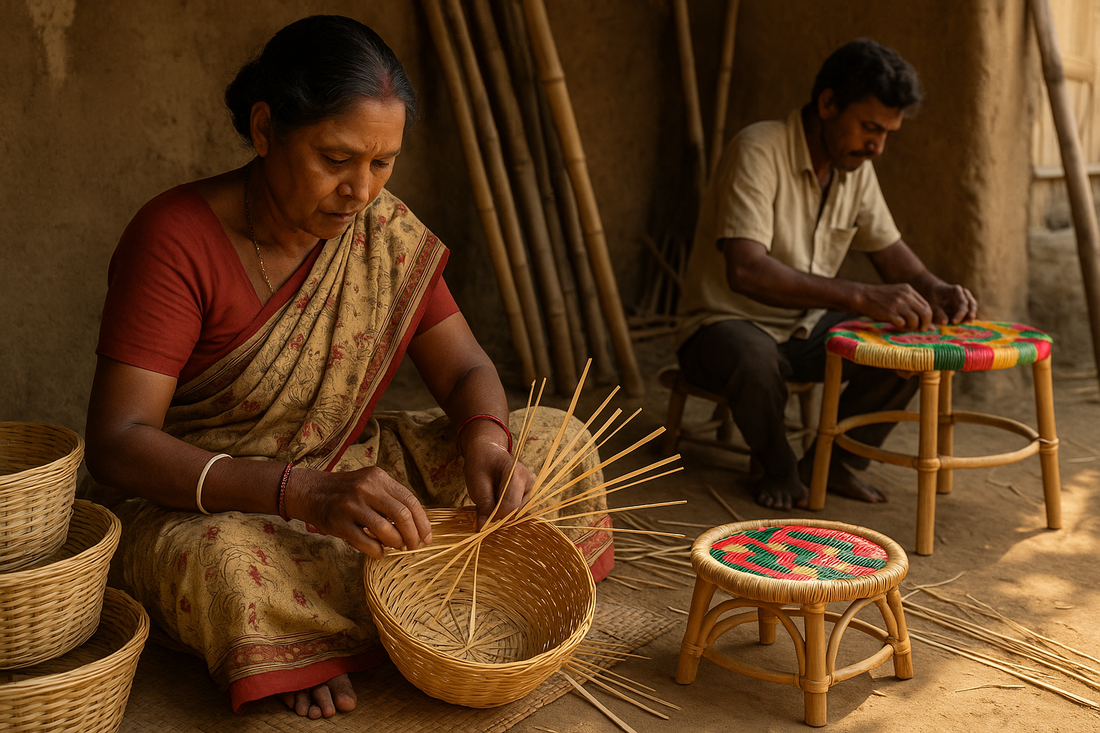
The Ancient Art of Bamboo Crafts: A Journey Through Time
Compartir
Bamboo crafts have been an integral part of Indian heritage, with ancient techniques like 'Tokri' weaving and 'Mudha' furniture making being passed down through generations. These crafts not only showcase the ingenuity and skill of artisans but also carry significant cultural value. However, with the advent of modern technology and changing lifestyles, these traditional crafts are slowly being lost. At Silpakarman, we are committed to preserving these ancient techniques while giving them a contemporary twist. Our artisans work tirelessly to create modern designs using traditional methods, ensuring that the cultural significance of these crafts is retained. Join us on a journey to explore the world of bamboo crafts and discover how we are modernizing the past for a sustainable future.
Historical Origins of Bamboo Crafts in Ancient India
The history of bamboo crafts in India dates back to the Indus Valley Civilization, where bamboo was used for various purposes including construction, furniture making, and even as a medium of exchange. The versatility and durability of bamboo made it a prized material in ancient times. As civilizations evolved, so did the techniques and applications of bamboo crafts. From intricate weavings to sturdy furniture, bamboo became an integral part of Indian craftsmanship.
Techniques and Cultural Significance of Tokri Weaving and Mudha Furniture Making
Tokri Weaving:
This ancient technique involves weaving bamboo strips into intricate patterns to create baskets, containers, and even furniture. The art of Tokri weaving is not just about creating functional items; it's about preserving a cultural heritage that is passed down through generations. Each woven piece tells a story of tradition, skill, and community.Mudha Furniture Making:
Mudha furniture making is another traditional craft that involves shaping and joining bamboo to create sturdy and elegant pieces of furniture. This craft requires great skill and patience, as each piece is handmade. Mudha furniture is not just functional; it's a testament to the artisan's skill and a reflection of the cultural values of simplicity and sustainability.Modernizing Bamboo Crafts at Silpakarman
At Silpakarman, we are dedicated to modernizing these ancient crafts while preserving their traditional essence. We have introduced the 'Contemporary Tokri Collection' and the 'Modern Mudha Series' to give these crafts a fresh and modern appeal. Our artisans have experimented with new designs, patterns, and applications, making these crafts relevant in today's world. From stylish home decor items to functional furniture, our collections showcase the versatility of bamboo crafts in the modern context.
Environmental Benefits of Bamboo Crafts
Bamboo crafts are not just culturally significant; they also offer several environmental benefits. Bamboo is a highly renewable resource, growing much faster than wood. It requires minimal water and pesticides, making it a sustainable choice for crafts. Additionally, bamboo crafts are biodegradable and non-toxic, reducing the carbon footprint associated with synthetic materials. By promoting bamboo crafts, we are supporting a sustainable and eco-friendly industry that benefits both artisans and the environment.
In conclusion, the ancient art of bamboo crafts is a journey through time, culture, and sustainability. At Silpakarman, we are committed to preserving this heritage while giving it a modern twist. Join us in our mission to promote bamboo crafts and support a sustainable future for artisans and the environment.
